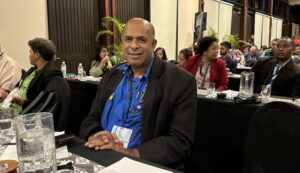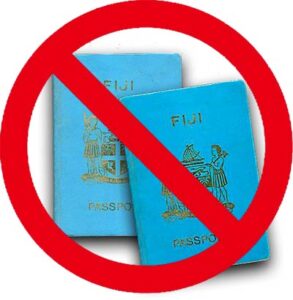Fiji’s Ministry of Fisheries and Forestry is increasing its efforts to regulate the timber industry.
This is in response to concerns over the sale of substandard treated timber in the domestic market, especially with the growing threat posed by the Asian subterranean termite.
In a statement delivered in Parliament today, Minister for Fisheries and Forestry Alitia Bainivalu outlined efforts to tighten regulations and increase public awareness in addressing the issues of timber quality.
“Last month, Hon. Premila Kumar and the Consumer Council of Fiji (CCF) raised this issue in the media, highlighting concerns about sub-standard timber, and questioning the role of the Ministry of Forestry,” said Bainivalu.
She acknowledged the seriousness of the problem which was also highlighted by Opposition MP Premila Kumar and the Consumer Council of Fiji (CCF), particularly as the termite infestation continues to spread across the country.
Timber treatment she says is essential to protect against insect attacks and fungal decay, significantly extending the lifespan of materials.
“Without treatment, many species, including pine, will not be suitable for use in exposed and ground contact situations,” Bainivalu said.
However, she also pointed out that timber treatment is not compulsory, and untreated timber from durable species can still be used in certain non-load-bearing applications. Likewise, low-grade timbers are used for boxing purposes.
Fiji currently has 29 registered timber treatment plants, of which 14 are licensed to operate this year.
These plants are monitored quarterly to ensure compliance with safety and quality standards, including the chemical treatment of timber to prevent decay.
“We collect monthly samples to test the concentration and penetration of preservative chemicals,” Bainivalu added.
While the ministry regulates treatment plants, its authority does not extend to enforcing the purchase of timber that meets legal standards.
“We can only advise and offer our assistance in the proper specification of timbers and also in the inspection to ensure that the specifications have been followed,” Bainivalu said pointing out awareness efforts carried out by the ministry through various means including radio talk shows and television programs on the quality of timber.
Different end uses have different levels of chemicals with assigned brandings, including:
H2 – Interior use (fully protected from the weather and not in ground contact)
H3 – Exterior use (not in ground contact)
H4 – Posts (low-risk and ground contact)
H5 – Poles (high risk and ground contact)
H6 – Post/Poles (marine use)
“We are exploring the possibility of developing a Timber Marketing Regulation to oversee the operation of timber retailers,” she stated, noting that this would help ensure higher standards across the supply chain.
“Proper building design and material specification are also crucial in protecting against termites.”









